Newfangled Ways
As We Were | All Aboard | Lighting The Way
Keeping In Touch | At The Turn Of The Tap | On The Road
On Call | A Tribute To Dr Brian Taylor
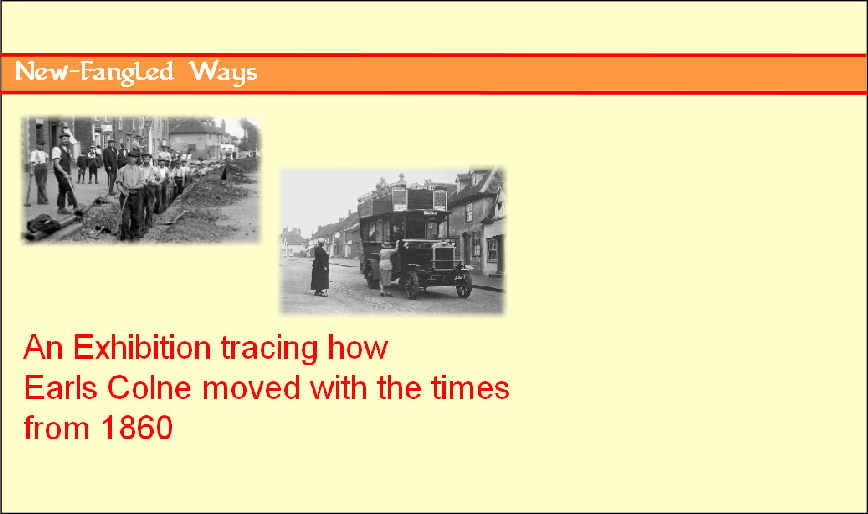
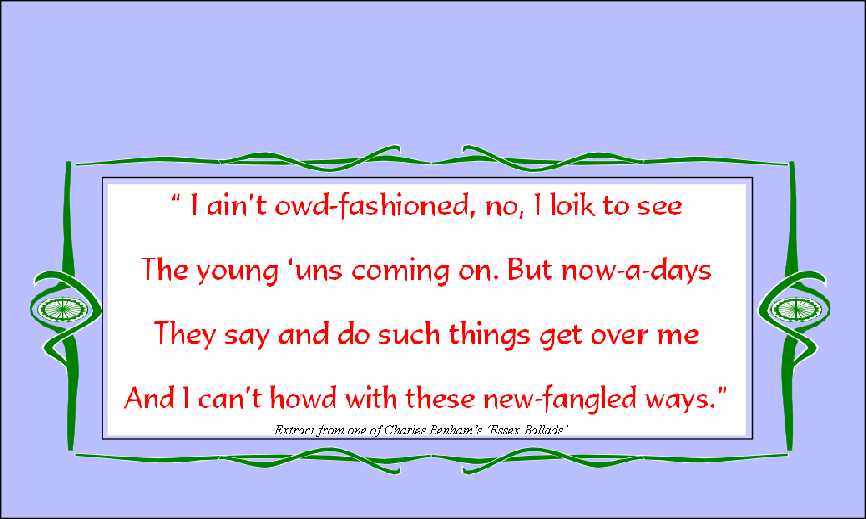
As We Were
The Village in 1860
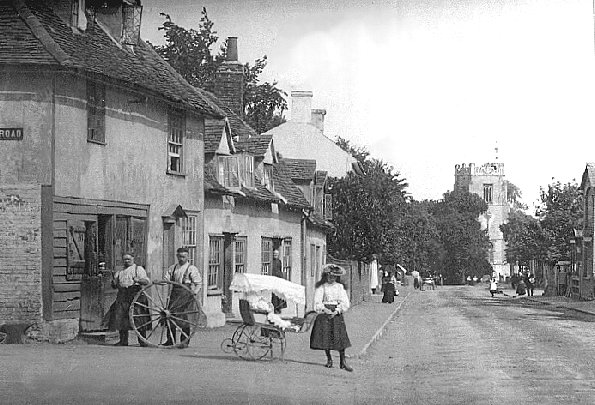
Earls Colne High Street in earlier times.
No street lights, no telephone poles……….no traffic
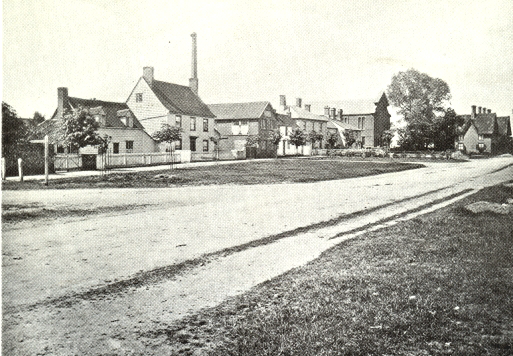
Before the Atlas Works expanded, the Hunt family were operating their business from a blacksmith’s forge on The Green beside the Baptist Church.
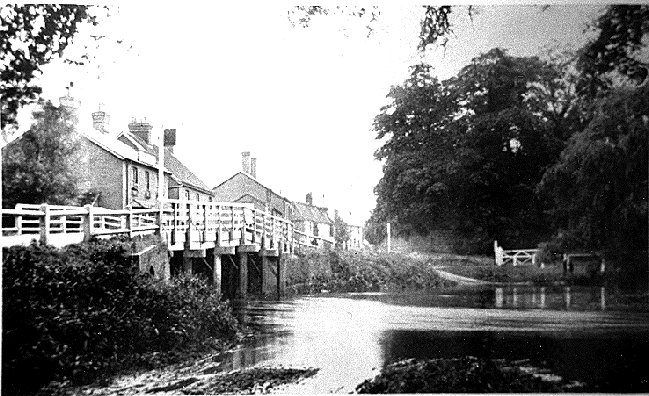
A narrow footbridge allowed pedestrians to cross the river at Colneford Hill.
Horse-drawn vehicles had to risk using the ford on the right.
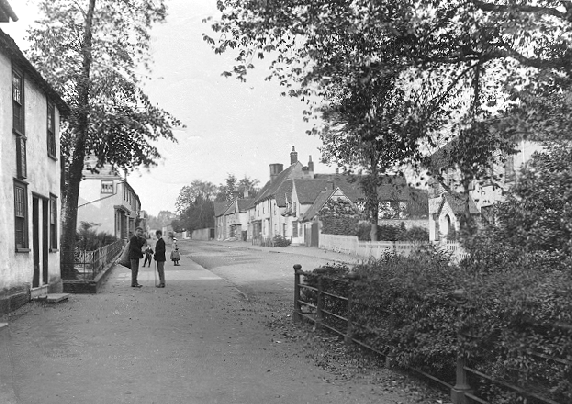
Philip Buck wrote about Earls Colne in the 1850s:
‘Rusticity was everywhere apparent. The paths were un-kerbed and made of flints and brickbats. Numerous projections existed ready to trip up the unwary. In the absence of gas, the candles in the houses did not illuminate the paths or lessen their dangers.. I once saw a stranger walking along the path in semi-darkness, opposite ‘The Castle’ tavern, suddenly bang with his full might into some palings which stood out from the house’.
All Aboard
The Railway comes to Earls Colne
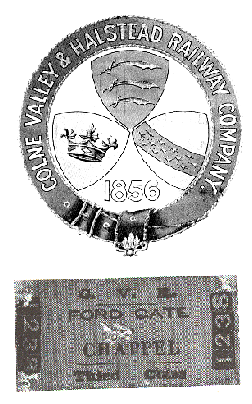
The Colne Valley Railway Company built a branch line between Chappel and Halstead in 1860, and opened an extension to Haverhill in 1863.
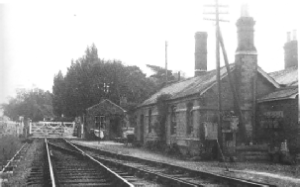
At first, White Colne station, seen above, also served Earls Colne.
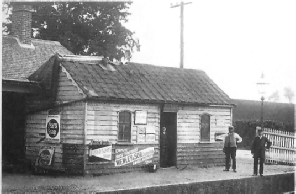
Later, a ‘request stop’, known as ‘Ford Gate Halt’, was built in our Station Road.
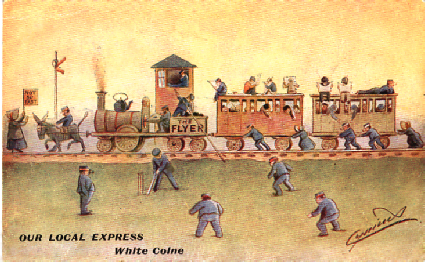
There were clearly those who thought that this arrangement was not ideal

In 1903, Reuben Hunt provided land and finance for a new station at Earls Colne, including a large goods yard and a house for the Station Master. Two years later the station became ‘Earls Colne’ in the company’s timetable.
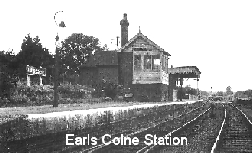
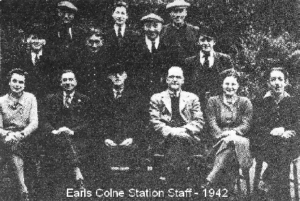
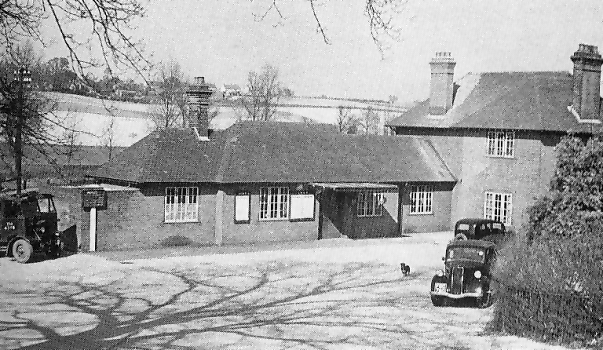
Earls Colne Station
Passenger services were withdrawn in 1961, and the line finally closed in 1965.
Lighting the Way
Gas Street Lights arrive
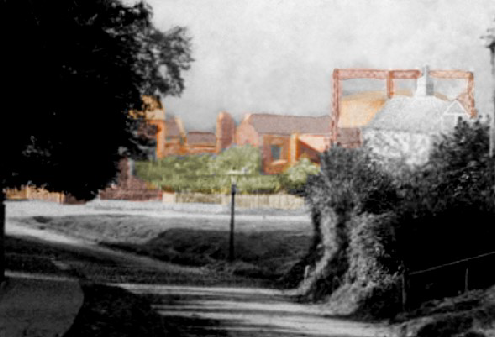
Colneford Hill Gas Works
In October 1861, the Essex Standard reported:
This pleasing spot in the Colne Valley is rapidly improving under the spirit of progress invoked by the presence of the ‘iron road’.
Now the parishioners are bestirring themselves to secure the illumination of their residences by means of ‘gas’.
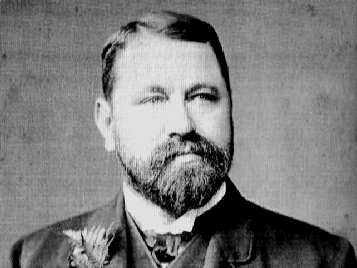
Henry Massingham was both Company Secretary of the Gas Light & Coke Company and Chairman of the Parish Council, formed in 1894, so it was not long before the subject of gas street lighting appeared on the Council’s agenda.
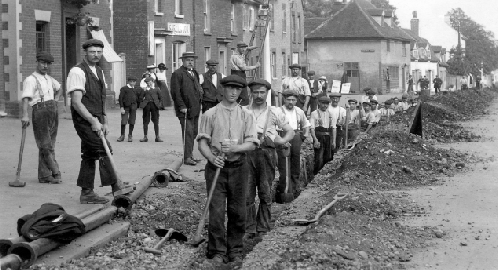
Laying the gas main along Earls Colne High Street
The initial arrangement for the lights was approved in May 1899. There would be 32 lamps from Station Road to the top of Colneford Hill, with 12 placed in side roads.
The lamps would be lit from the middle of September to the middle of March (except on nights when the moon was full).
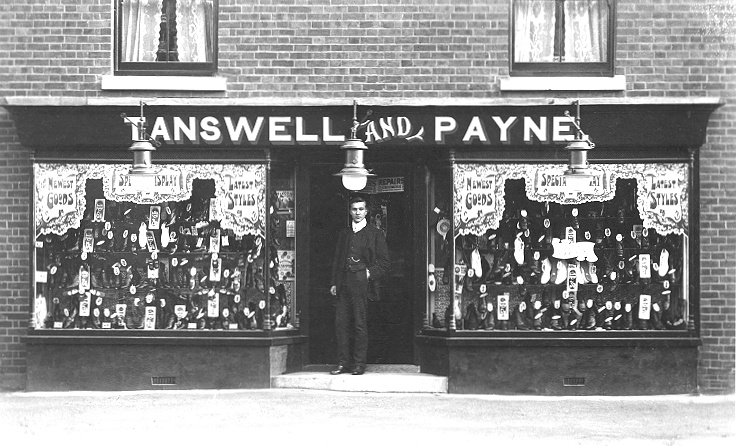
The Gas Works at the bottom of Colneford Hill was completed in 1865 and soon, local shops could illuminate their display windows – with gas mantles outside, to reduce fire risk.
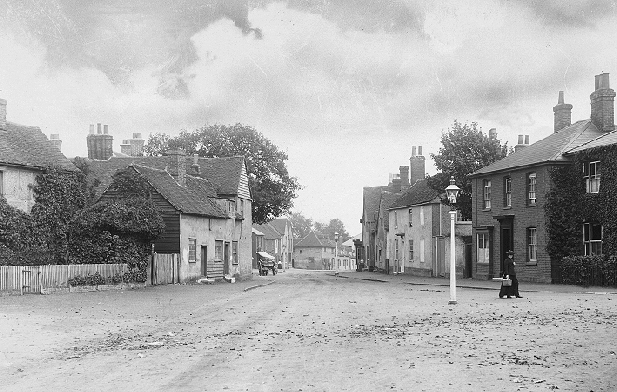
This picture of Foundry Lane corner shows that the position of the lamps took little account of hazards to traffic.
Keeping in Touch
Postal and Telephone Services

In September 1902, the Essex & Halstead Gazette reported:
‘On Wednesday next the village will realise on of its favourite ambitions and people will be talking over the newly-installed telephone system.
What is the next enterprise to be?
The switchboard is large enough for 30 subscribers,
‘if they should turn up’.
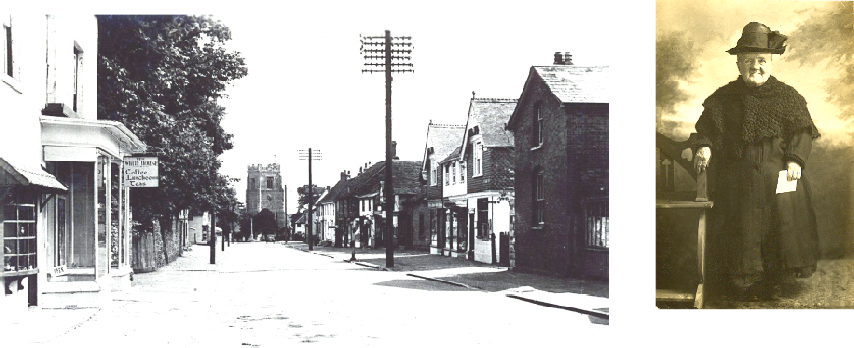
Early postal services operated from Mr J Augustus Tawell’s drapery store, seen here in the 1950s, when it had become ‘The White House’ tea rooms.
Mr Tawell’s successor,
Mr Joseph S Farrants, conducted the postal service for another 32 years. When he retired in February 1901, he thanked his assistant, Miss Sally Wash, for her loyal support.
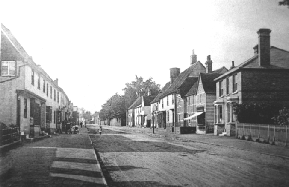
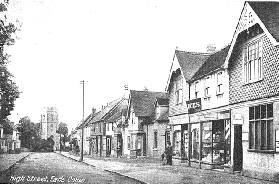
Purpose built premises opened on the south side of the High Street. Shop fronts were added to a former farm house, providing accommodation for a small sweet shop and the show-room of the Gas Light & Coke Company, as well as the Post Office.
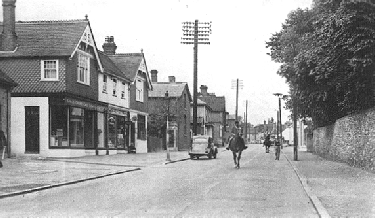
A few months later, the Parish Council started to make enquiries about the installation of a telephone exchange. ‘Mr Burton was not too sanguine but other members hailed the suggestion with remarks such as “Why not?”
The GPO insisted on a guarantee of at least 12 subscribers and quoted an annual charge of between £8 and £10, depending on their distance from the exchange.
As the quotation at the beginning of the section shows, the exchange opened in September 1902 – a year before Halstead’s.
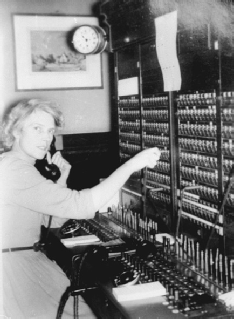
Mrs Dorothy Kelly working the switchboard in 1954.
When Mr Gordon Kelly became the Postmaster in 1953, the exchange was located in his dining room, and was manually operated.
The family had to make sure that one of them was always on hand to deal with callers.
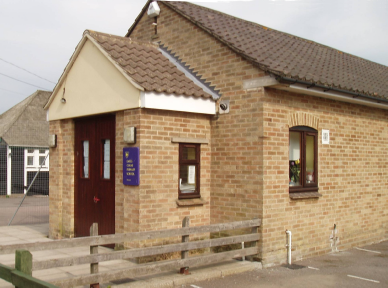
The telephone exchange eventually moved to a building in Park Lane, which is now used as a Nursery attached to the Primary School.
At the Turn of a Tap
Mains Water for All
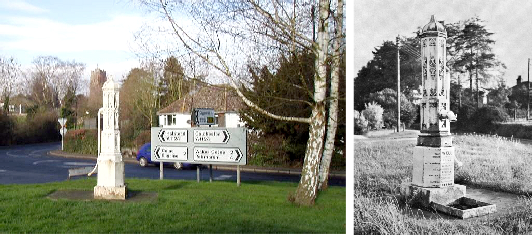
In January 1913 the local press reported:
‘The Vice-chairman of the District Council said he was heartily sick of the Earls Colne Water Question that had been before them, on and off, for nearly 23 years.
Young men had grown old in considering it and it was time the matter was brought to an end’.
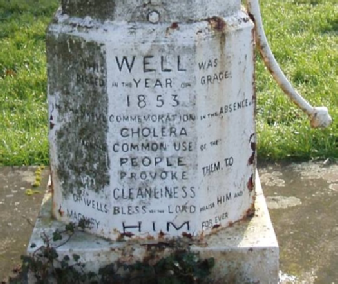
The Pump at Pound Green
was installed in 1883 to commemorate the absence of Cholera from the village. It was also ‘to provoke cleanliness’. Subsequently it was discovered that the water was undrinkable!
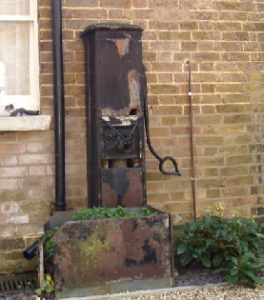
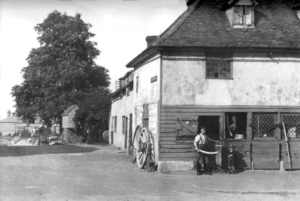
Discussions about a mains water supply for the village began in 1890 and, despite the District Council’s frustration, it was not until July 1914 that a system was installed and working. Meanwhile, most households had to rely on the nearest pump or well.
Occupants of Hunt’s houses were more fortunate. They had a water supply piped from the well at the Atlas Works. After a very hot summer in 1890, when many local wells ran dry, Reuben Hunt provided a water tank at the end of Queens Road which also connected to the Atlas Works supply.
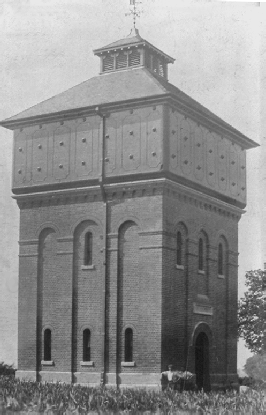
Water Tower in Coggeshall Road

Lower Holt Street 1933
When the mains supply came into operation in 1914, the water tower in Coggeshall Road was supplied from a bore-hole in Tey Road.
However, the quality of the muddy brown water gave rise to many complaints. The landlord of ‘The Lion’ wrote to the local paper ‘To see your customers spoiling good spirits with such water is really too bad!’.
It was not until 1937 that the Halstead Rural District Council approved plans for a Sewage Works to serve Earls Colne and White Colne.
On the Road
From Horses to Motor Cars
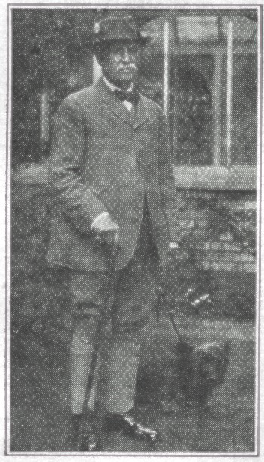
On 3rd September 1902, the Essex and Halstead Gazette reported:
‘Colne, in order to be in the fashion, has just had its first motor car accident. But, fortunately, it was not a very serious one.
On Wednesday, while Mr W E Grimston, JP, was driving his car near Stone Bridge, he collided with a fruit cart from Halstead, which lost three spokes from one of its wheels.
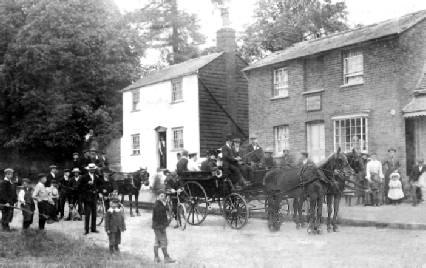
Despite the arrival of the railway in 1860, most people’s journeys relied on horses until after the First World War.
The message on the above postcard, circa 1900, reads:
‘Off to Tiptree for a Strawberry Tea at six pence each’.
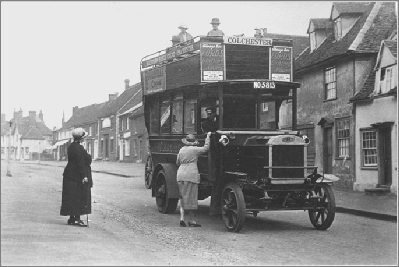
Sidney J Blackwell started a bus service in the 1920s, using converted army vehicles purchased after the First World War. The lady on the left is Mrs Hammond, the Vicar’s wife. Her daughter is talking to the driver, Tom Simmons.
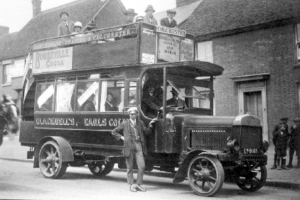

The fare from Halstead to Colchester was 2 shillings (10p) return.
The advertisements are for Bourneville Cocoa and Ford Blotting Paper,
with a card in the window promoting the ‘Colne Strawberry Beds’.

Blackwell’s started a coach service to London in 1929 with a later return time than the last train, making it more convenient for outings to theatres and other attractions.
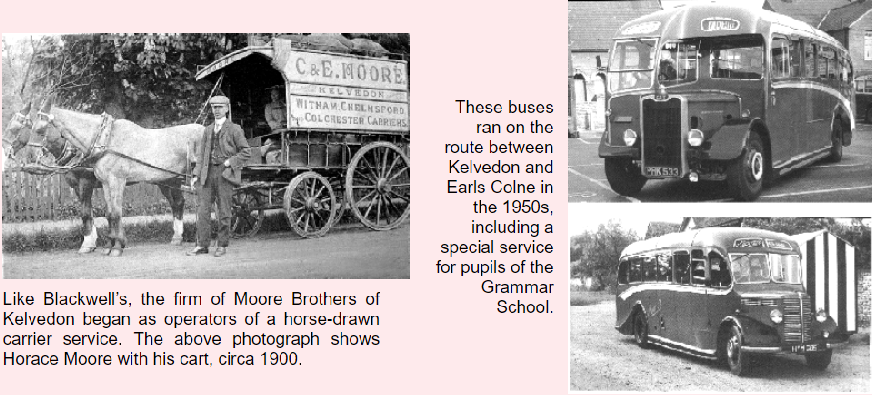
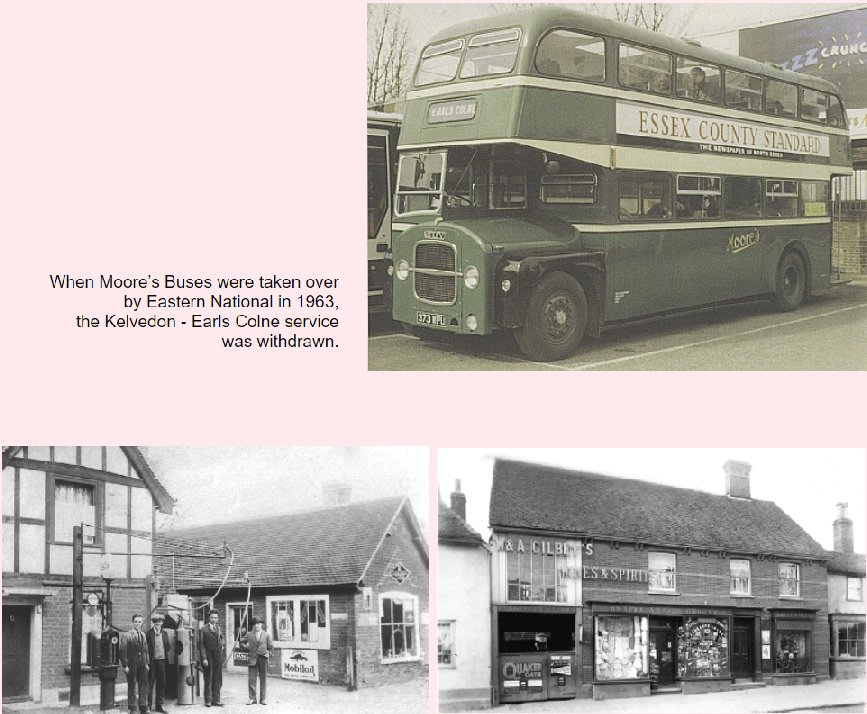
Bill Poulter converted a former blacksmith’s forge in Upper Holt Street to a Garage and was the first proprietor in Earls Colne to install a petrol pump.
Joe Gage’s Garage in the High Street, now through the archway and behind the building, had previously been a grocery and furniture store.
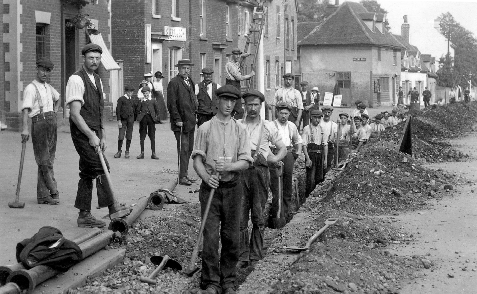
Next door to Gage’s Garage, Mr A T Walford specialised in the sale and repair of motor cycles
(as well as the latest type of ‘Wireless’).
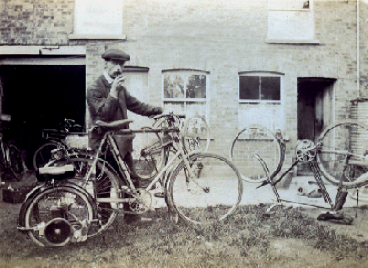
Mr Walford is seen here adding a ‘Wall’s Auto Wheel’ to a pedal bicycle to produce an early form of moped.
On Call
Progress in Medical Services
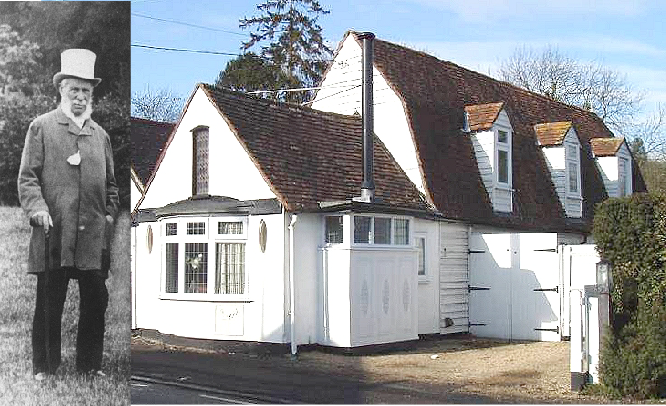
Dr John Polly Taylor moved to Earls Colne in 1812 and set up his Practice in the annexe of ‘Boxteds’ in Upper Holt Street. In 1842, he was joined by his son, ‘Young Doctor John’, whose portrait hangs in the Council Chamber of the Village Hall.
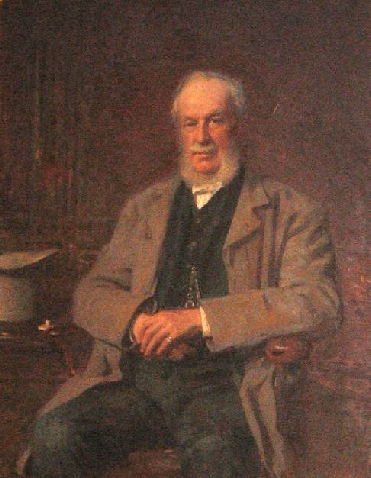
The Revd David Methven presenting Dr Taylor with
his portrait on the occasion of his 80th birthday commented:
“In the coldest winter and the hottest summer; in the midst of blinding snow and under a tropical summer sun he has ever been ready, day and night, to meet any call and to turn out in his well-known gig at the call of duty.
Dr John Taylor is a thorough Englishman, a regular John Bull. We might go to the four corners of the globe but we would never find another John Taylor”.
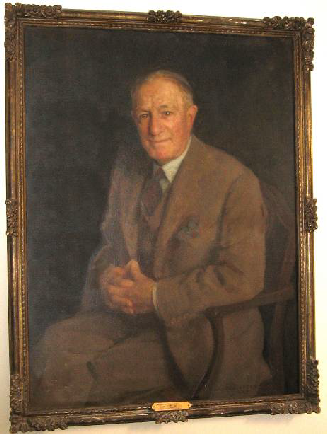
Dr Thomas Edward (Ted) Pallet joined the Practice in 1887. When he retired in 1945, the local paper calculated that the three doctors had served the village between them for 133 years.
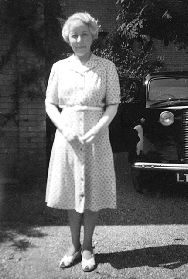
Dr Lily MacKinnon became Dr Pallet’s Junior Partner in 1927. Although it was unusual for a small Practice to have a woman doctor at that time, she was popular with her patients and became the Senior Partner on Dr Pallet’s retirement.
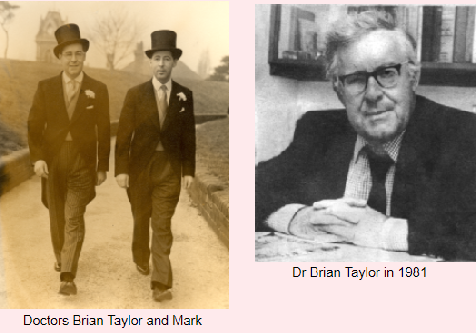
Just before the National Health Service was introduced in 1948, Dr Brian Taylor moved from a post as House Surgeon at the Colchester General Hospital to become a partner in the Earls Colne Practice. Five years later, he was joined by Dr Mark Cutts. They not only introduced many improvements to their range and methods but, in 1967, were able to move the Surgery to new premises in Queens Road.
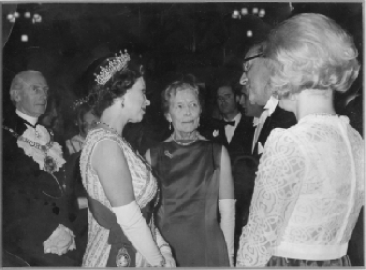
The Queen talking with Dr Brian Taylor at a Royal Reception.
A Tribute to Dr Brian Taylor
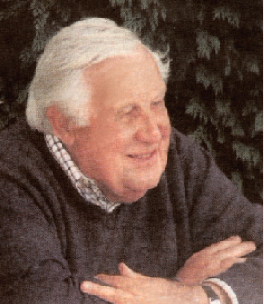
A Tribute to Dr Brian Taylor 1921 – 2006
Throughout his medical career, Dr Brian Taylor always tried to ‘move with the times’. As he said himself, if he noticed a gap in his knowledge, or the way he practiced, “I would try to remedy the gap, fulfil the need. All the time, the number one priority was the people on my list and my commitment to being a GP”. As well as being a qualified anæsthetist, he studied psychological medic-ine and, after his retirement from general practice, con- tinued to offer consultations in homeopathy and acup- uncture.
Coupled with his dedication to his patients was a lively interest in a wide range of subjects and village activities. He was Chairman of both the Earls Colne Society and the Management Group of the Earls Colne
Heritage Museum having led the steering group, which set up the project, from its inception. It was at his suggestion that our current display should include a section on the progress of medical services, in which he played such a large part. We hope that he would have approved the result.
